We managed to get to know each other most closely (and spend several days) with the Samsung Galaxy S24 FE smartphone, which can claim, if not the status of a hit (in the wrong price category), then the title of one of the most interesting sub-flagships.
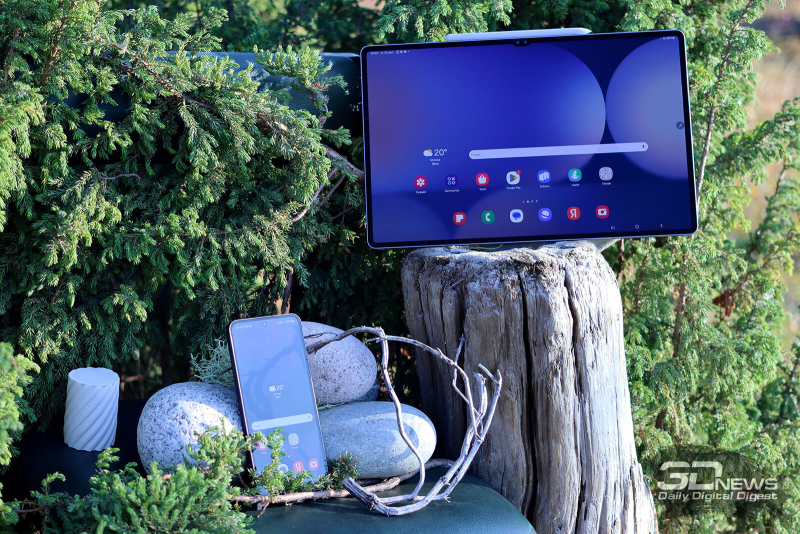
But let’s start by talking about the tablets of the new Samsung Galaxy Tab S10 series. I managed to get acquainted with the two older versions – S10+ and S10 Ultra. There aren’t many changes compared to the Tab S9, but there are some. And in general, the tablet market is not exactly oversaturated, and any new model arouses interest.
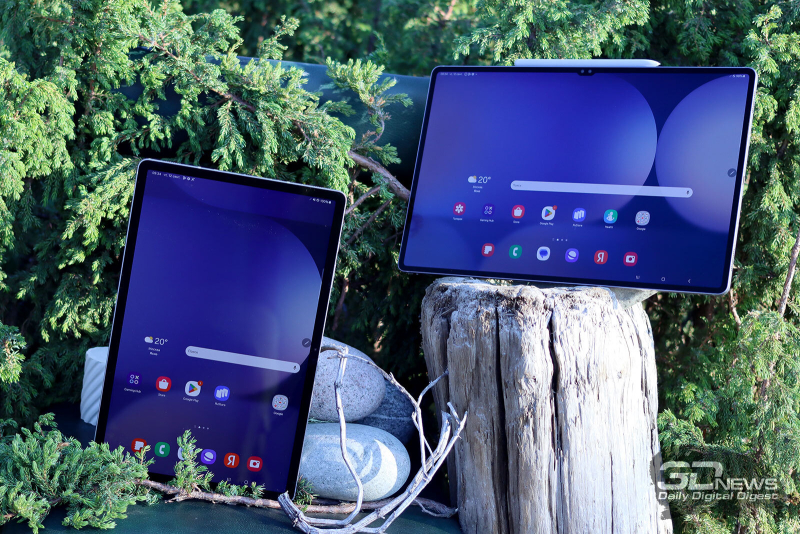
Conceptually and externally, the new generation of the older Tab S is almost no different from the previous one. Dual cameras on the front panel, for the sake of which we even had to allow a slight influx on the effective area of the screen, a special magnetic panel on the back cover, where the included Pen S stylus is attached, and dual rear cameras. Even the screens have not changed – these are Dynamic AMOLED 2X panels with a diagonal of 12.4 inches for the S10+ and 14.6 inches for the S10 Ultra.
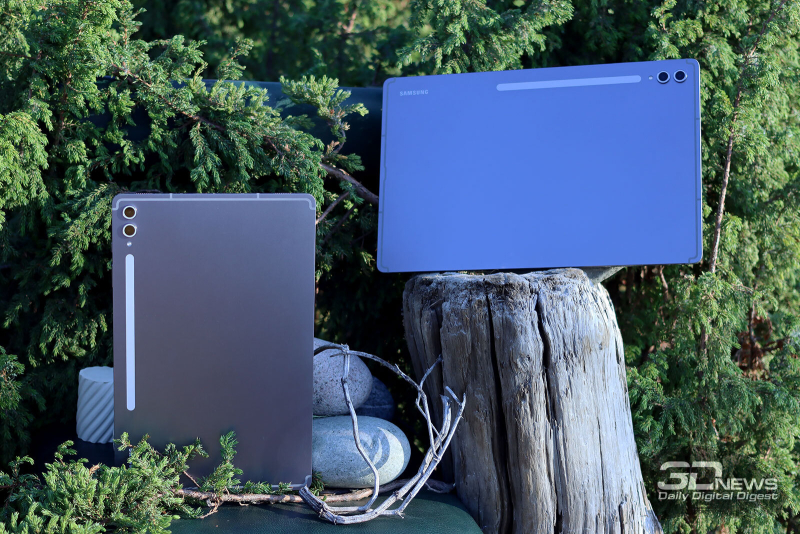
The case is made of aluminum alloy, there is IP68 moisture protection, the general appearance features have not changed in any way. But the Tab S10+ and Tab S10 Ultra have become a little thinner and lighter than their predecessors – not significantly, but still. The thickness of the S10+ is now 5.6 mm, and the S10 Ultra is 5.4 mm. Of course, mini-jacks have not returned to such thin cases and will never (apparently) return.
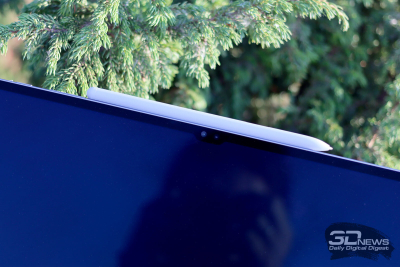
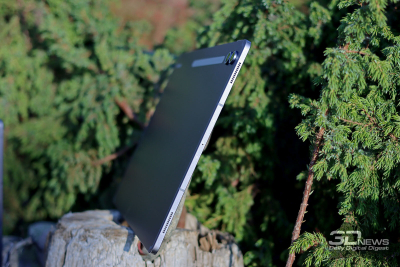
Samsung Galaxy Tab S10 Ultra
The batteries have not changed (10090 mAh for the “plus”, 11200 mAh for the “ultra”), nor has the supported charging power changed (45 W). It seems that these are the same tablets, but under a new name – and this is almost true. Actually, the key detail has changed – the Tab S10 is equipped with the MediaTek Dimensity 9300 hardware platform, and this is the most sudden move given the dominance of Qualcomm and platforms of its own development (Samsung Exynos) at least on the company’s older devices.
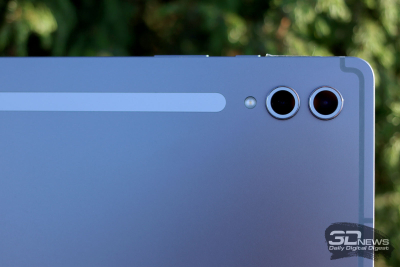
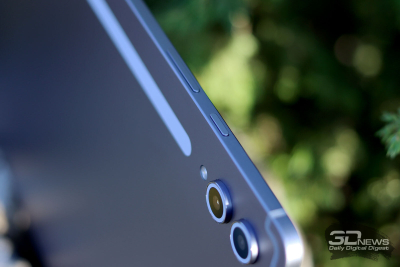
Samsung Galaxy Tab S10 Ultra
And this is at least good news, taking into account the problems with heat dissipation in the current older Snapdragon and the much quieter operation of the Dimensity 9300 in this regard – we dealt with this chipset, for example, in the vivo X100 Pro smartphone.
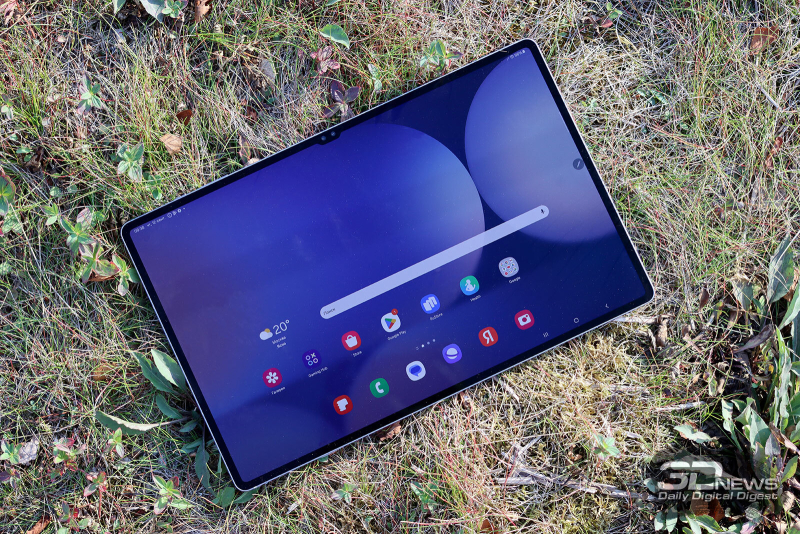
Samsung Galaxy Tab S10 Ultra
It’s also worth adding that the Tab S10 Ultra has support for Wi-Fi 7 and Wi-Fi 6e for the Tab S10+. Otherwise, yes, indeed, these are practically “nines” with a new platform and cosmetic external changes. As before, there are versions both with a cellular communication module and only with a Wi-Fi modem, the prices will be approximately the same.
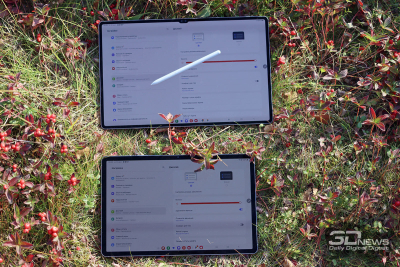
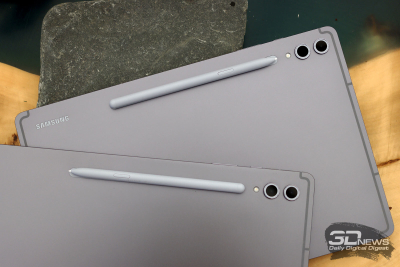
Let’s move on to the sub-flagship smartphone model – Samsung Galaxy S24 FE.
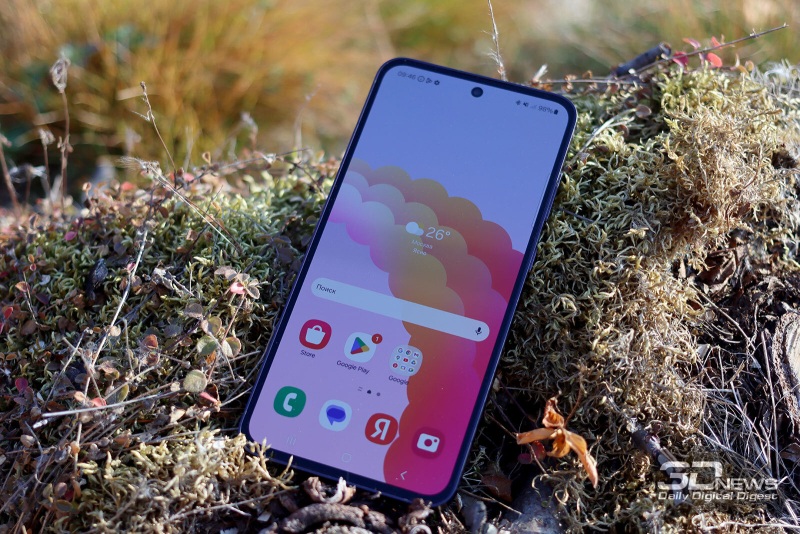
In fact, the situation with it is somewhat similar to the one we see with the Tab S10. This is also a relatively “minor” update compared to its predecessor, the Galaxy S23 FE, with a greater emphasis on software than on hardware, in the manner of the brand’s flagships. That is, yes, in the foreground is the active implementation of artificial intelligence directly into the OneUI shell interface. It becomes more and more with each new Samsung smartphone released – yes, Galaxy AI has grown in some ways after the release of Fold6 and Flip6, and the sub-flagship in this regard is no different from “natural” flagships. But I’d rather talk about this functionality in detail (more precisely, I’ll repeat much of what has been said) in a full review of the smartphone, which is already being prepared. Here we’ll just say that yes, Galaxy AI is gradually spreading from the highest models to simpler smartphones – some of the functions are already available on A-series devices (like the most popular “Circle and Find” tool).
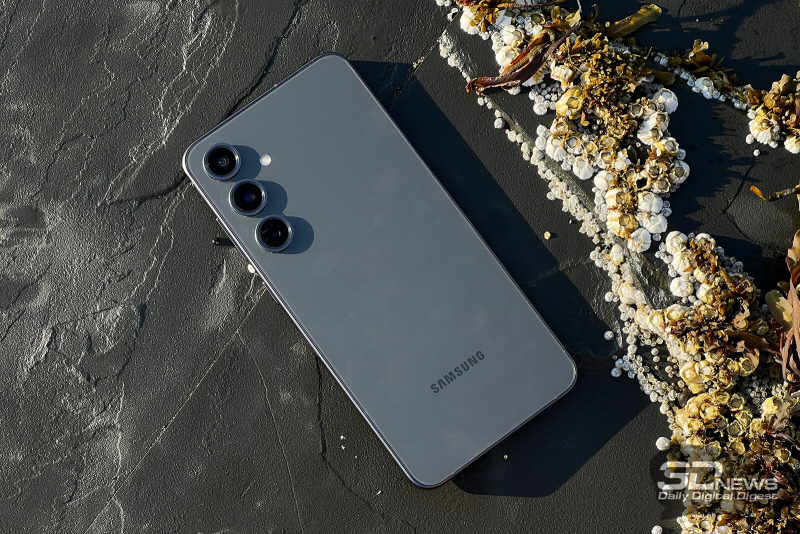
Externally, the Samsung Galaxy 24 FE has hardly changed compared to its predecessor. The design code is still the same – victorious minimalism, where the cameras are assembled on the rear panel in a vertical row without being separated into a separate block. The edges are flat, the screen is also flat. At the same time, the new smartphone has become slightly thinner, but not lighter than its predecessor.
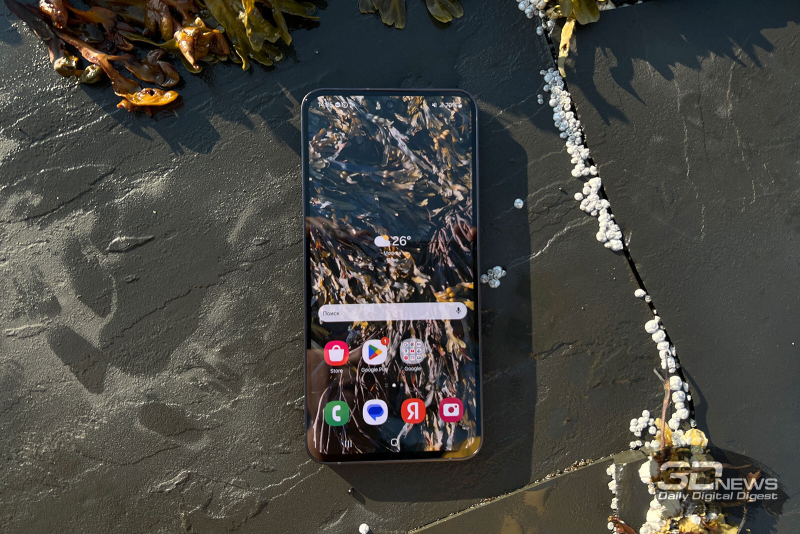
But the sub-flagship version is inferior to its older brother (Samsung Galaxy S24+), with which the S24 FE also has a lot in common, being noticeably thicker and heavier. And this is with the same screen (6.7 inches, Dynamic AMOLED 2X) and an even smaller battery (4700 mAh versus 4900 mAh; by the way, this is still slightly more than the S23 FE). Well, such are the vicissitudes in a slightly lower price range.

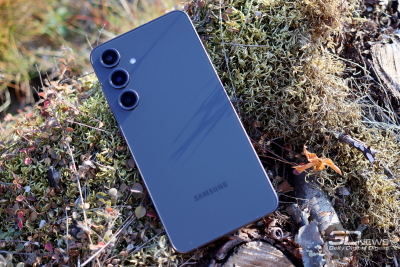
Another vicissitude is a hardware platform with slightly reduced performance. The Samsung Galaxy S24 FE is equipped with the uncontested (now regardless of the market to which the smartphone is supplied) Samsung Exynos 2400e. There were few details about it at the time of writing, but according to the information from the Device Info HW application, we can conclude that it has lowered the frequencies of older cores, but slightly increased the frequencies of energy-efficient cores (here, ARM Cortex-A520). In general, the benchmark results are quite encouraging – normal flagship level, there is no serious drawdown relative to the older S24.


But the RAM installed on the S24 FE is noticeably less – 8 GB versus 12 GB for the S24+. It was not possible to find out the standard of the drive, but judging by the tests, again, this is UFS 4.0, there are no compromises here. Among other technical information, I note the absence of Wi-Fi 7 (Wi-Fi 6e maximum), eSIM support and the existence of a version with a 128 GB drive. This is exactly the version we tested, by the way.

As for other characteristics, it is necessary to supplement what has already been said about the design with the fact that the case, as before, is waterproof according to the IP68 standard, the front and back are covered with tempered glass, but of a newer generation – Gorilla Glass Victus+ (S23 FE had Gorilla Glass 5 ). There are four color variations: graphite, grey, blue and mint.

The rear cameras are responsible for three focal lengths. Wide-angle – 12 megapixels, with an f/2.2 aperture lens and without autofocus, telephoto camera – 8 megapixels, f/2.4 aperture, autofocus, optical stabilization, and triple zoom. Well, the main camera with a 50-megapixel Quad Bayer module, f/1.8 aperture, Dual Pixel autofocus and an optical stabilizer. Front: 10 MP, ƒ/2.4, with autofocus.










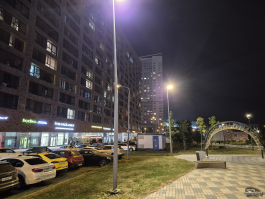
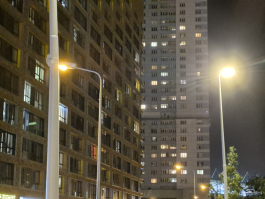

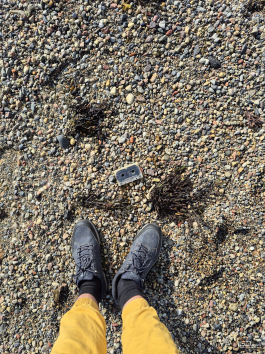

There are no changes here with respect to the Samsung Galaxy S23 FE, it’s the same set – only the processing algorithms could have changed (they promise improved AI processing of night shots and higher-quality software zoom), but without comparing it with a magnifying glass, this cannot be understood. In any case, these are quite adequate cameras for a sub-flagship, although they are not outstanding compared to other competitors offering a more “fussy” and interesting set. We’ll look at the quality of photos and videos in more detail in the full review; here are just a few examples of pictures. At first glance, the level is very decent, which is what you expect from older Samsungs.
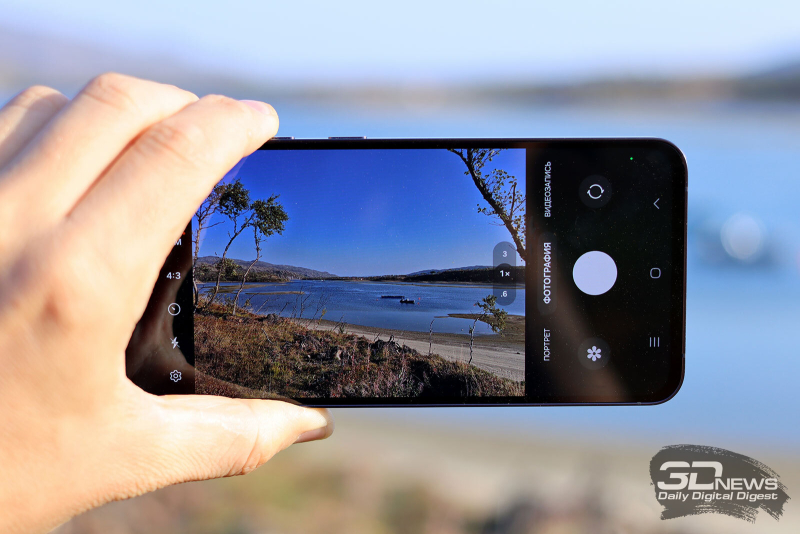
In general, the smartphone makes quite an impressive impression – then everything depends on what price the manufacturer sets for it. More precisely, how much cheaper it will be than its very close relative S24+. The price will become known after the publication of the material – then we will update it.